SFDA 2026 First Screening Results Announcement
(Fashion Goods Category)
-
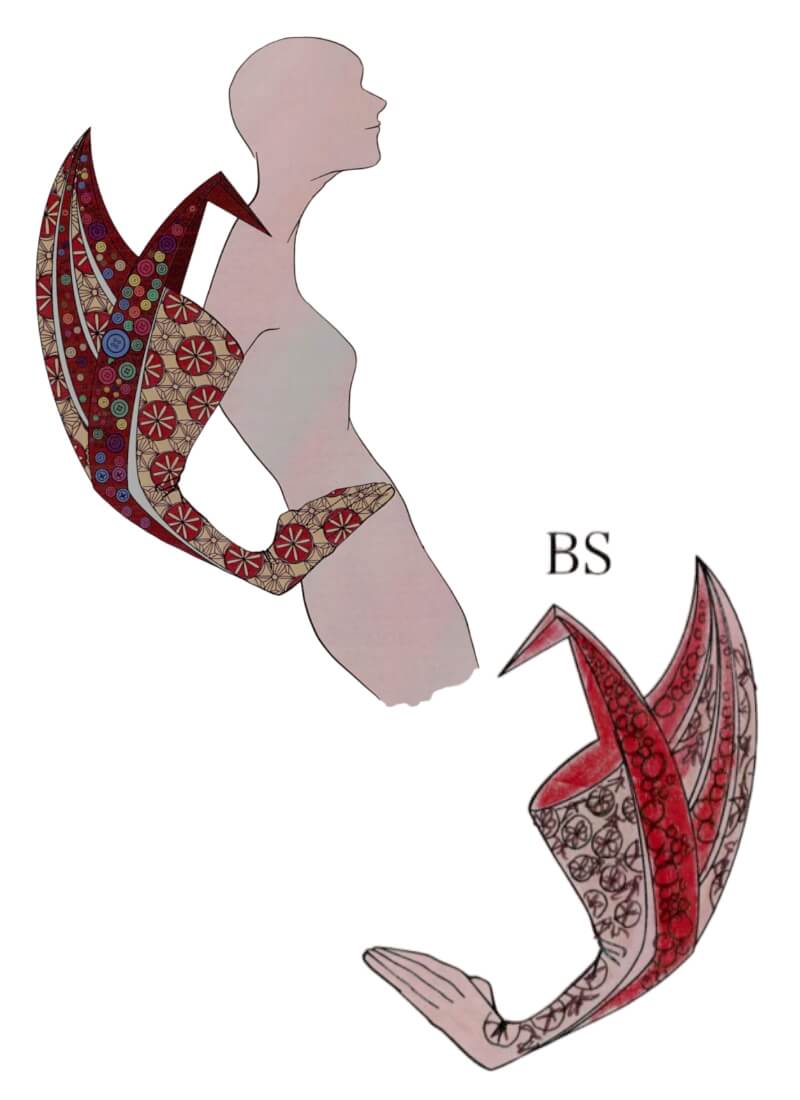
Tokyo Mode Gakuen
井上 楓陽
Work Title:The Sewing Crane
Concept
Inspired by the Japanese folktale "The Crane's Return of a Favor," this design uses the act of sewing as a symbol of "connection, mending, and storytelling."
By revealing rather than concealing scars, it expresses beauty, embodying prayer, rebirth, and a quiet inner strength.Features
- Seams and buttons symbolize the beauty of "mending and connecting."
- The spread of crane wings and the use of white, red, and gold represent purity and vitality.
-
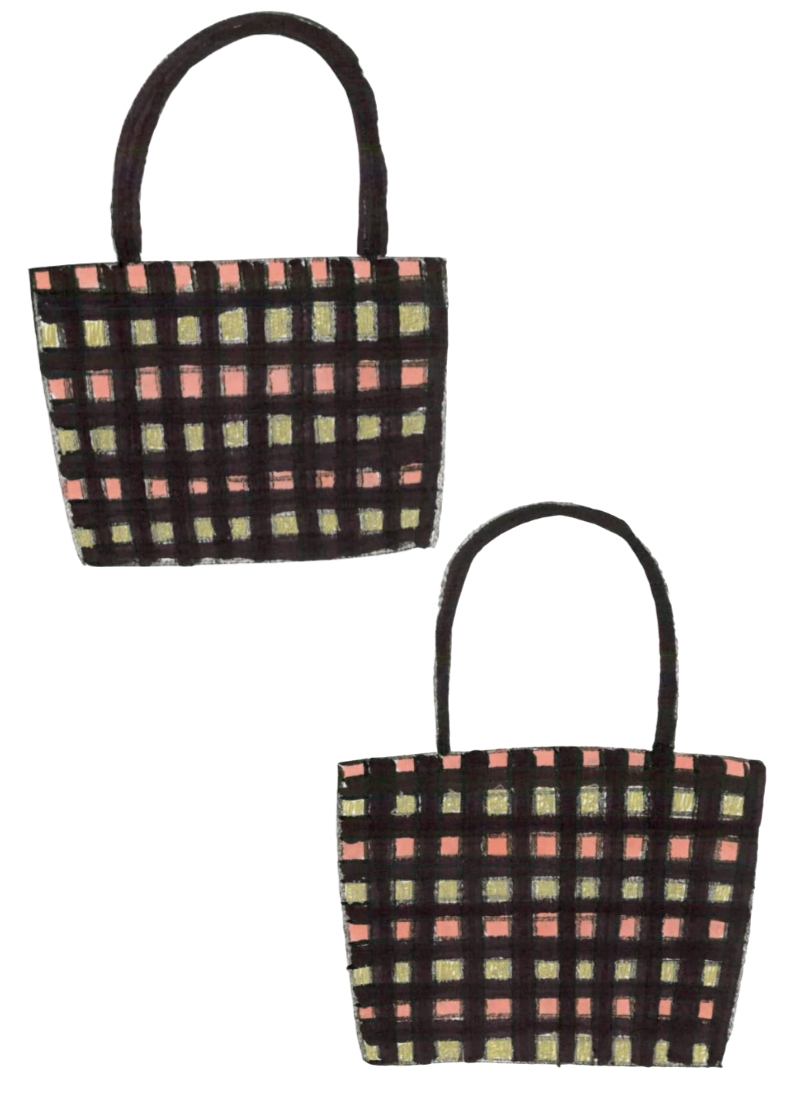
General application
上田 典子
Work Title:Hand-Knitted Bag Using Obijime Cord
Concept
Obijime cords have beautiful colors and patterns, so I wanted to make a hand-knitted bag that showcases them just as they are.
The concept is to use only obijime as material → making the bags easy to mass-produce → thus making them more sustainable.Features
- Made from silk, the bag has a luxurious feel.
- Design variations can be created by changing the color combinations, knitting techniques, and shapes.
-
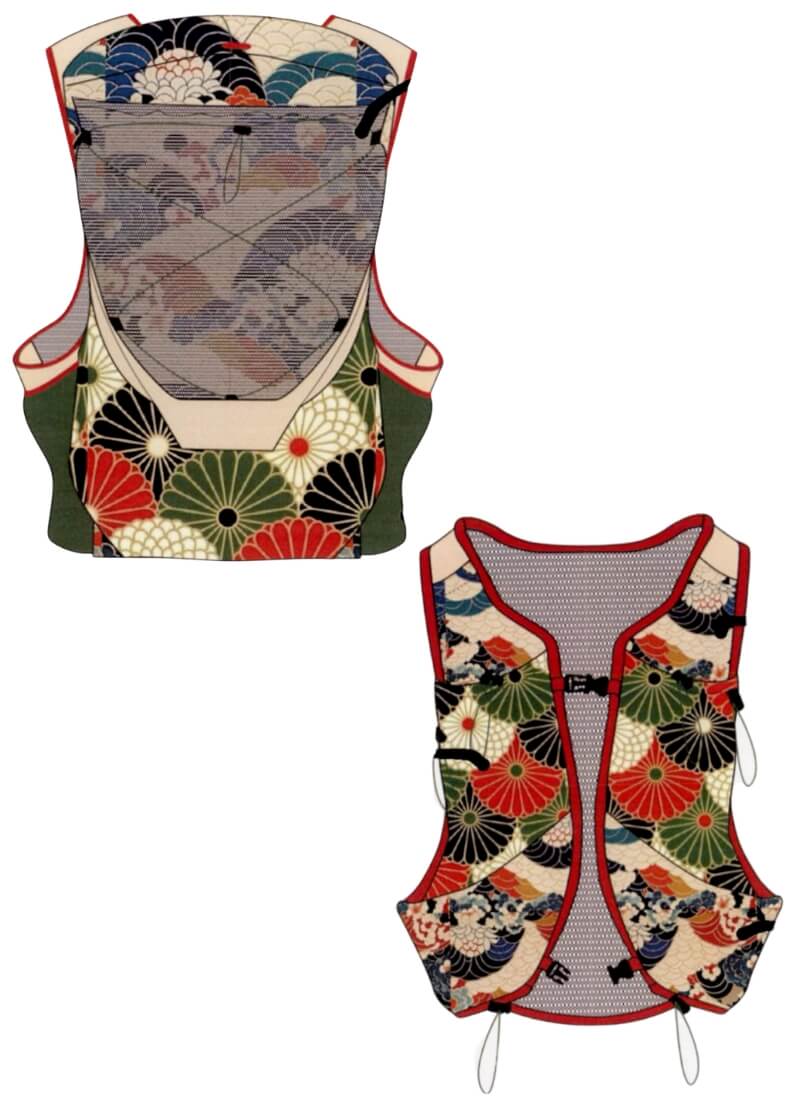
Bunka Fashion College
岡田 耀穂
Work Title:Wa-Zac
Concept
Pioneering a new running scene.
Features
- Gaining new audiences by combining elements of traditional Japanese style (“wa”) with running gear.
-
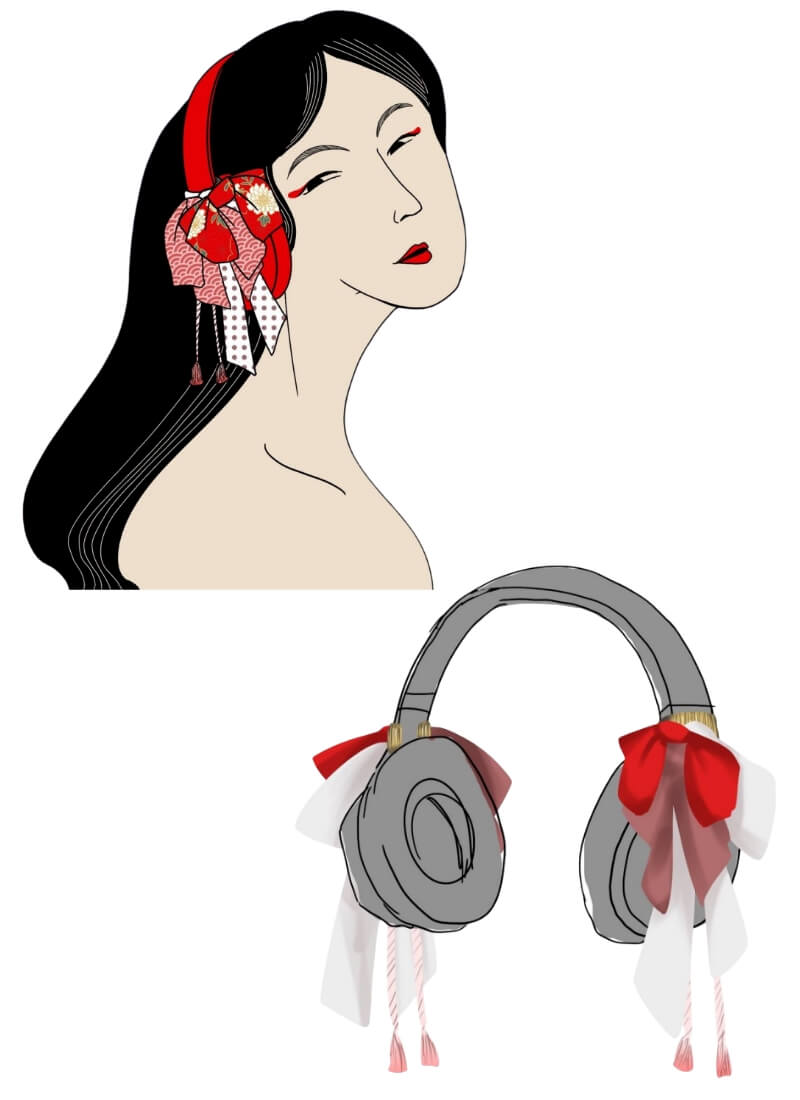
Bunka Fashion College
小野里 有紀
Work Title:Bon Groove
Concept
Inspired by the sense of groove and euphoria found in both listening to music and performing bon odori (traditional Japanese dance), I designed accessories to be attached to headphones.
Features
- Drawing on the image of colorful obi sashes swaying on the back, the design combines kimono fabric with traditional Japanese accessories.
- Against the backdrop of the current headphone-as-fashion trend stemming from the Y2K revival, this concept can be developed in multiple variations.
-
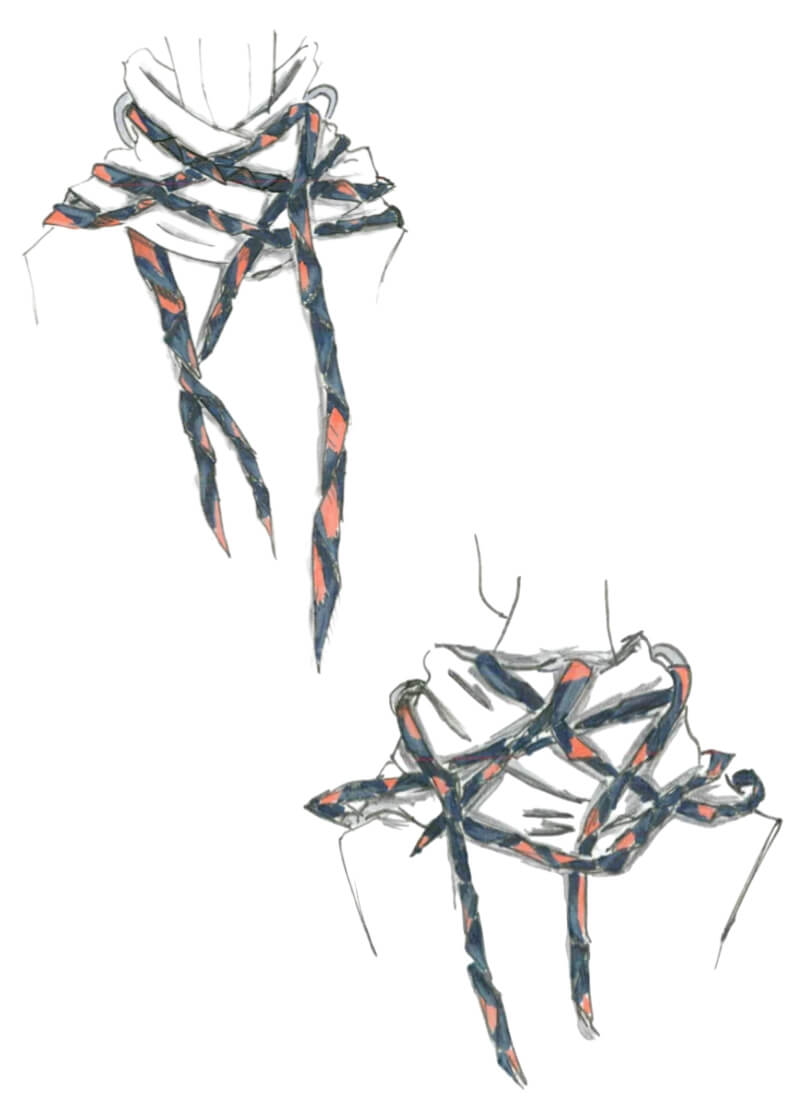
Tokyo Mode Gakuen
川本 征矢
Work Title:Liberty twist
Concept
The theme was to freely wear the beauty of the traditional Japanese style.
Features
- By threading and tying cords, the garment's shape can be freely changed, allowing the wearer to style it to their own preference.
-
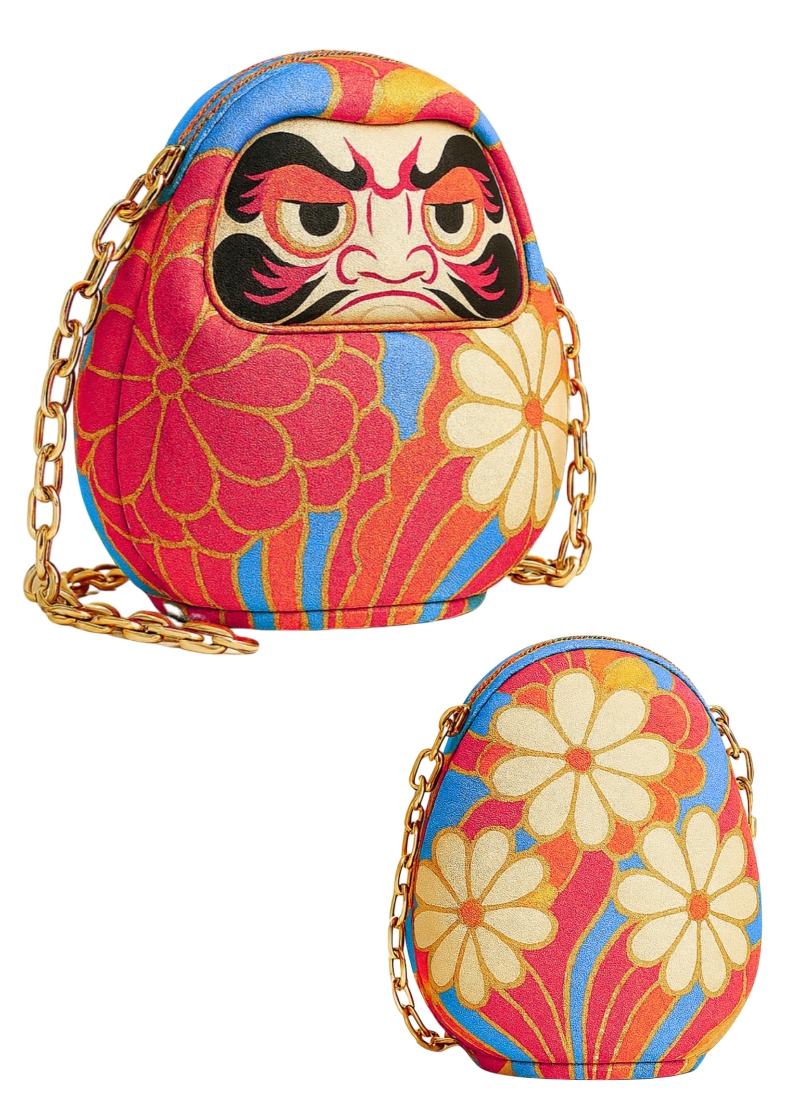
General application
下吹越 直紀
Work Title:BAGMA
Concept
An attempt to reconfigure the symbolic and meaningful elements of the traditional lucky Daruma into a modern bag.
Reusing kimono textiles to incorporate the unyielding spirit of the Daruma into everyday life.Features
- Kimono fabric is used as the material for the bag.
The Daruma, long regarded as a symbol of wish fulfillment and new beginnings, is reimagined in a unique and contemporary way. - By blending Daruma-inspired motifs with a lightweight chain, the design juxtaposes a sense of solidity and lightness.
This design shares Japanese tradition with the world.
- Kimono fabric is used as the material for the bag.
-
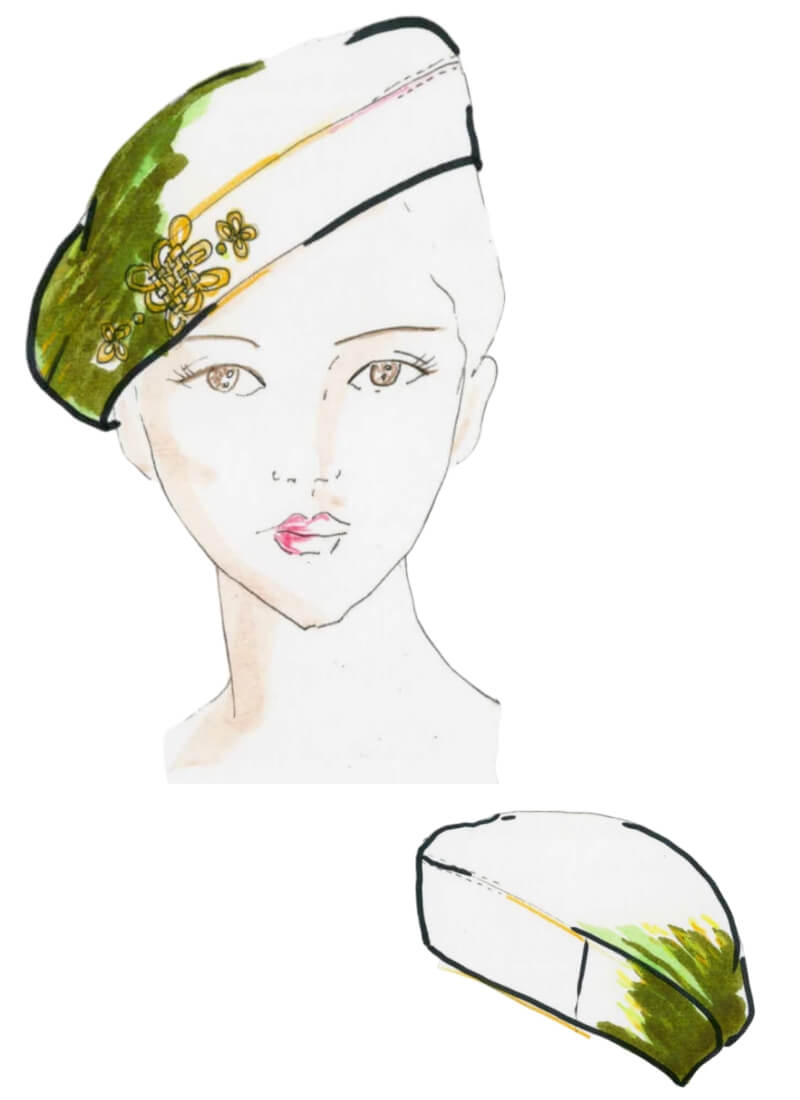
General application
高橋 里子
Work Title:Musubi
Concept
The aesthetics of rebirth — weaving memories together. Kimonos and obis that have once gone to rest are given new life in the form of a hat.
Features
- By using colorful tsumugi silk threads for piping and tying obijime cords as decorative accents, the design blends the past and present.
-
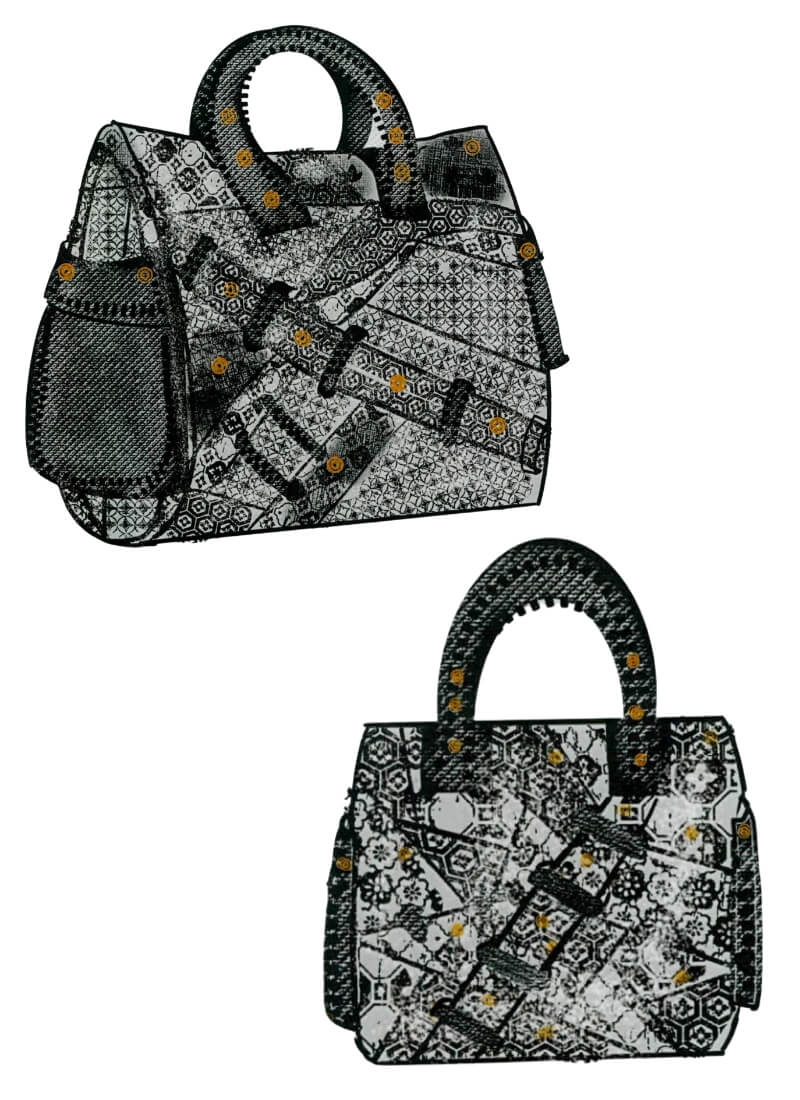
Tokyo Mode Gakuen
田部井 怜生
Work Title:Wa DENIM
Concept
Tradition × Denim.
A new kind of “Wa-Mode” bag that brings together the beauty of traditional Japanese aesthetics and casual denim.Features
- A blend of delicate traditional Japanese patterns and the boldness of denim.
- Rivets add an urban touch.
-
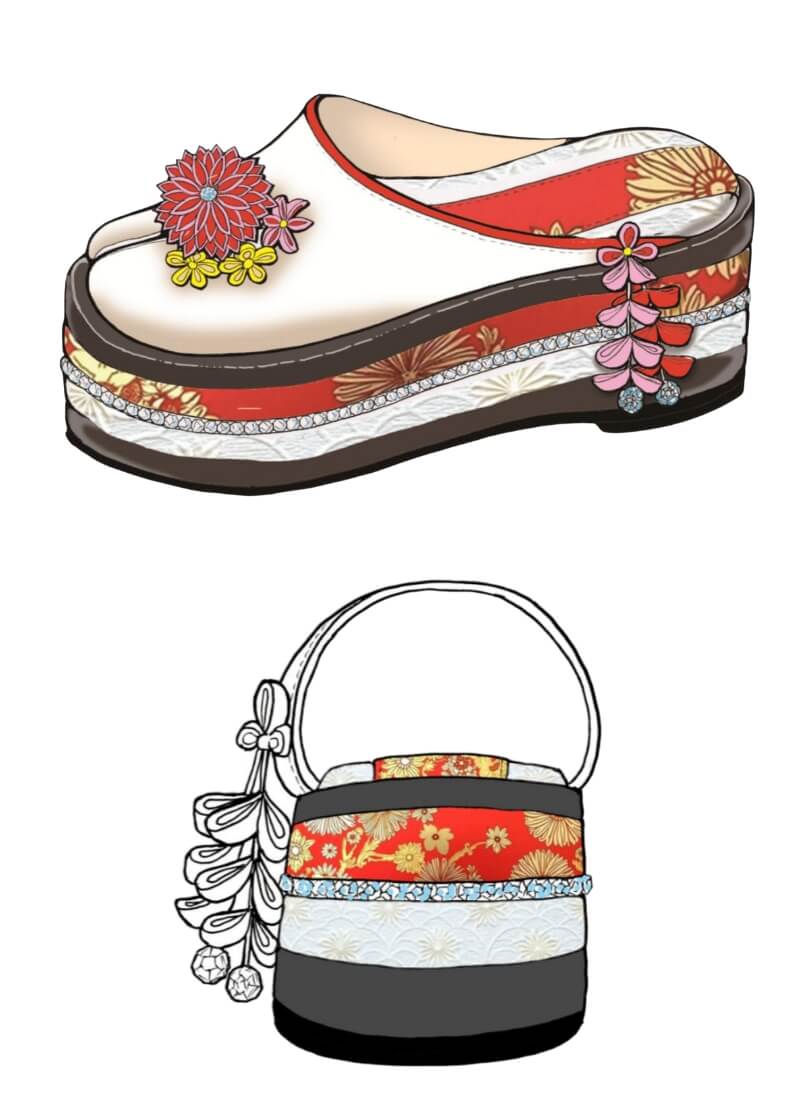
General application
東海林 理見子
Work Title:MARUDE Zori
Concept
Shoes that can be worn like traditional zori sandals, to keep feet warm during the Coming-of-Age Ceremony.
Combining the best aspects of both zori and modern footwear for women who are not used to wearing zori.Features
- Mule shoes that look like tabi socks but keep the toes warm, addressing the problem of cold feet during the January Coming-of-Age Ceremony when wearing traditional sandals and tabi.
- These elegant shoes are easy to wear even for women unaccustomed to zori, offering a comfortable and festive option for the occasion.
-
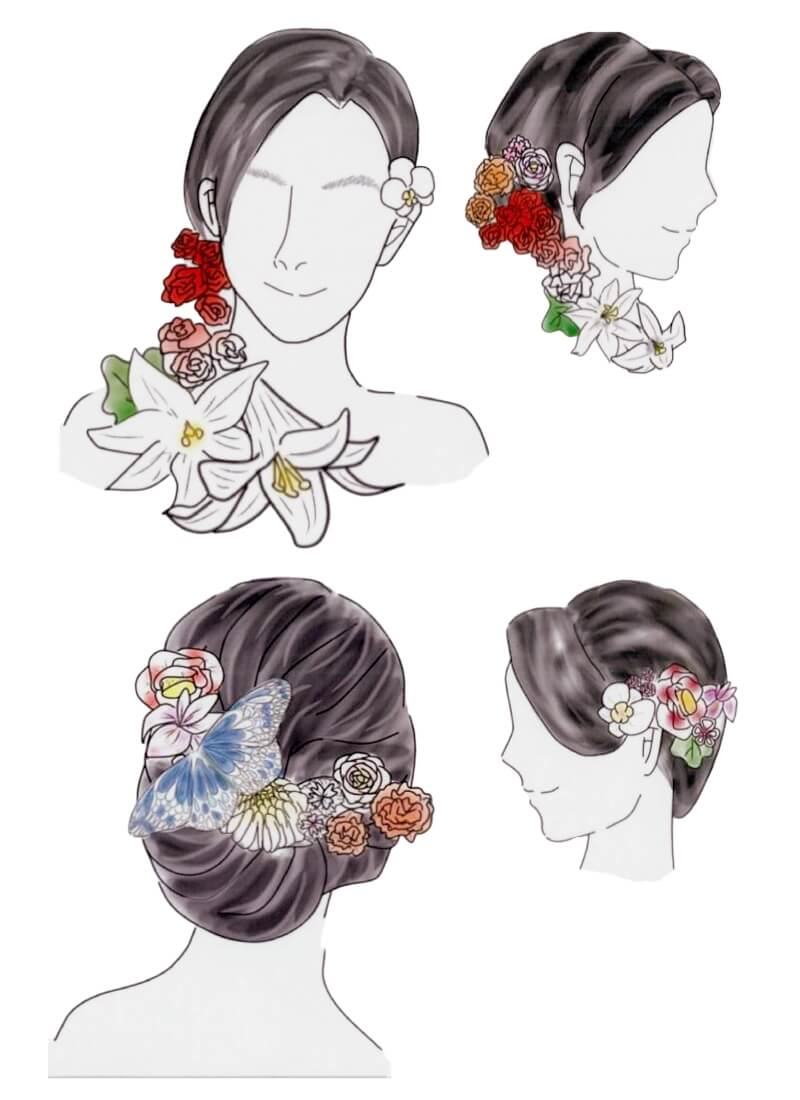
Keio University
中田 南
Work Title:Reincarnation and Sublimation
Concept
A service that allows anyone, regardless of their kimono dressing skills, to feel close to all the kimonos sleeping in their wardrobes, along with the memories they hold.
A sustainable item that goes beyond simply being a fashion accessory.Features
- Enveloped in Japanese traditional beauty:
This rich design incorporates fine silk kimono fabrics, tsumami-zaiku craft, pewter, and decorative mizuhiki cords. - A single item can be used as a hair ornament, earring, or necklace, and after its role as an accessory has been fulfilled, it is transformed into an art object.
- Enveloped in Japanese traditional beauty:
-
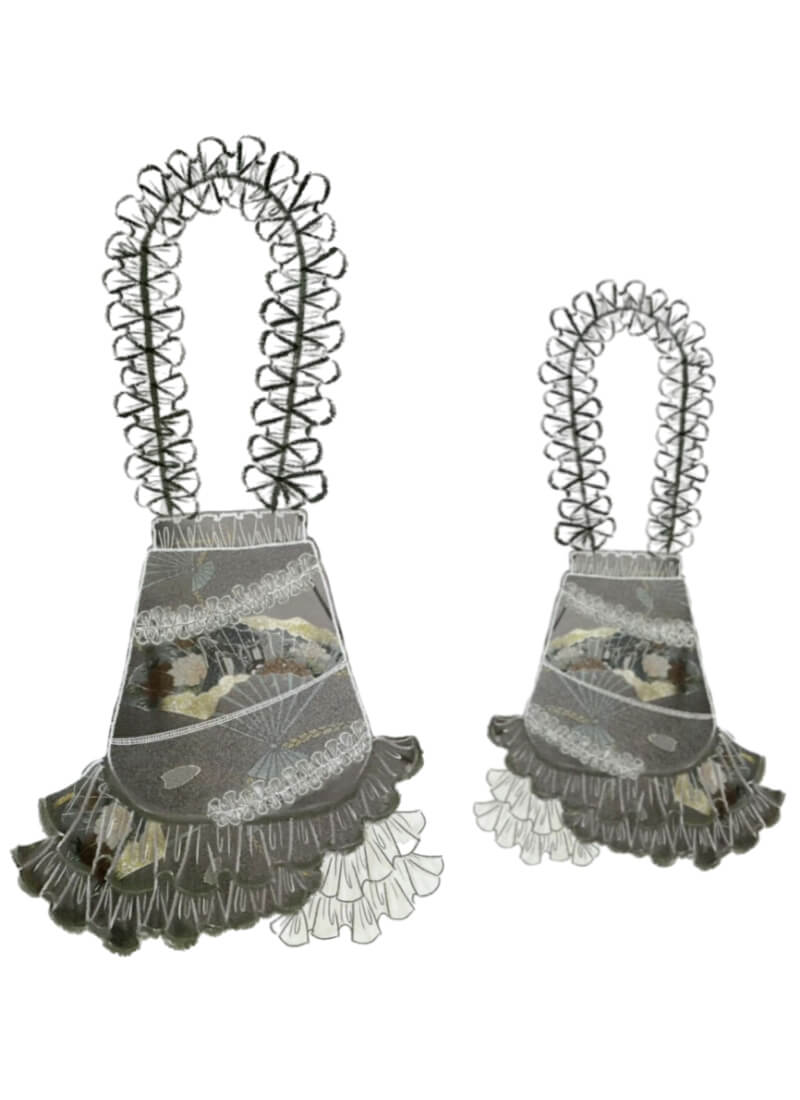
Tokyo Mode Gakuen
長谷川 歩
Work Title:KIMONO Gather Shoulder Bag
Concept
The concept is "Remaking my grandmother's kimono."
The fabric was custom-made for my grandmother's sixtieth birthday.
I wanted to embody her wish to preserve this precious item for the future.Features
- The kimono has been reimagined as a large-capacity bag, utilizing generously sized pieces to highlight the fabric's original colors and patterns.
- This bag blends Japanese elegance with romantic charm and a sense of exclusivity, featuring a bold silhouette and a contrasting panel design.
-

Bunka Fashion College
福井 達也
Work Title:Kimono Fashion
Concept
Translating the obijime (kimono sash cord) into a fashion piece.
Features
- The overall silhouette is inspired by the obijime, with a structure that tightens when you put your legs through.
- With its checked and striped patterns and the color combination, the piece is designed to feel familiar and suitable for everyday wear.
-
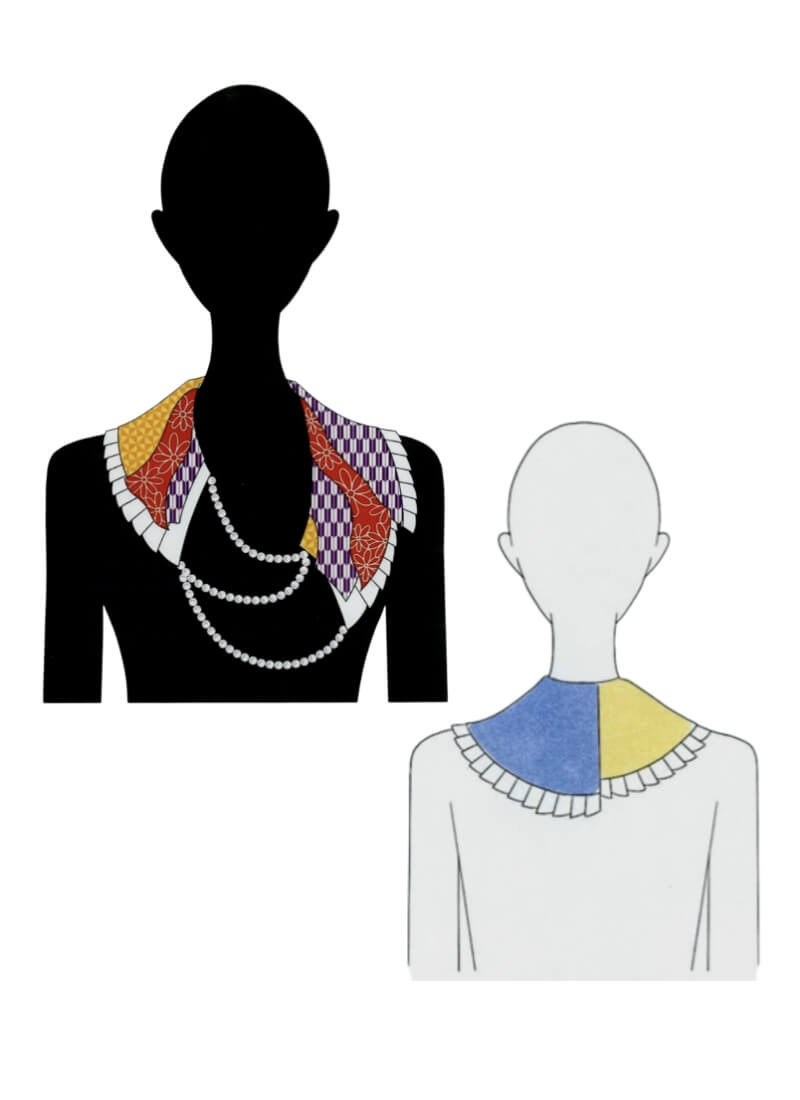
Tokyo Mode Gakuen
真篠 なずな
Work Title:Memories of Wa, Dressed in Modernity
Concept
A detachable collar made from kimono fabric. The bold arrangement of traditional Japanese patterns and pleated edging creates a classic sense of refinement. Adorned with pearls, this hybrid style brings together Japanese and Western aesthetics, matching well with Western clothing.
Features
- The deliberate asymmetry in color and pattern on the left and right sides adds movement and depth, drawing the eye.
- With its bold silhouette and panel design, this item adds romanticism to Japanese elegance.
-
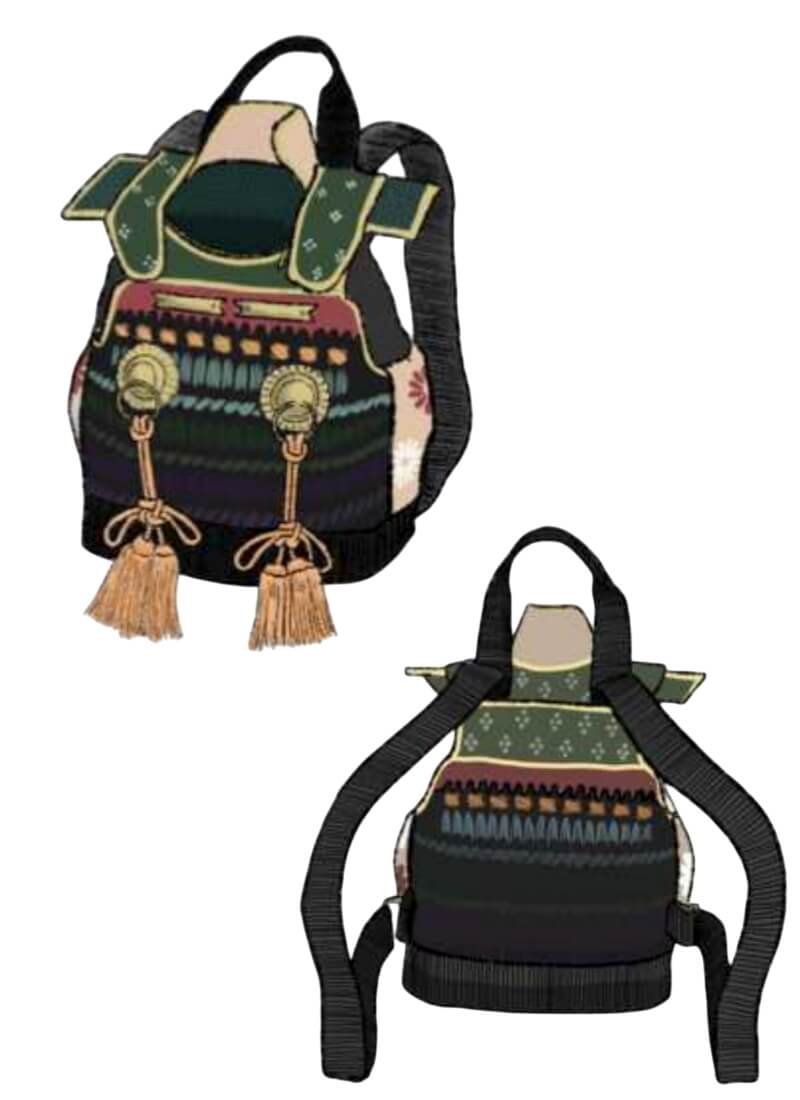
Tama Art University
八木 香菜子
Work Title:Armor Backpack
Concept
Upcycling traditional armor into a backpack.
Armor has long been a symbol of one's identity. Fashion is something that defends your sense of self.
This piece aims to create the armor of the modern era.Features
- The fabric portion is made from traditional obi sashes, and the straps are crafted from obi cords.
- Its distinctly Japanese character makes it well-suited as a souvenir for visitors from overseas.
-
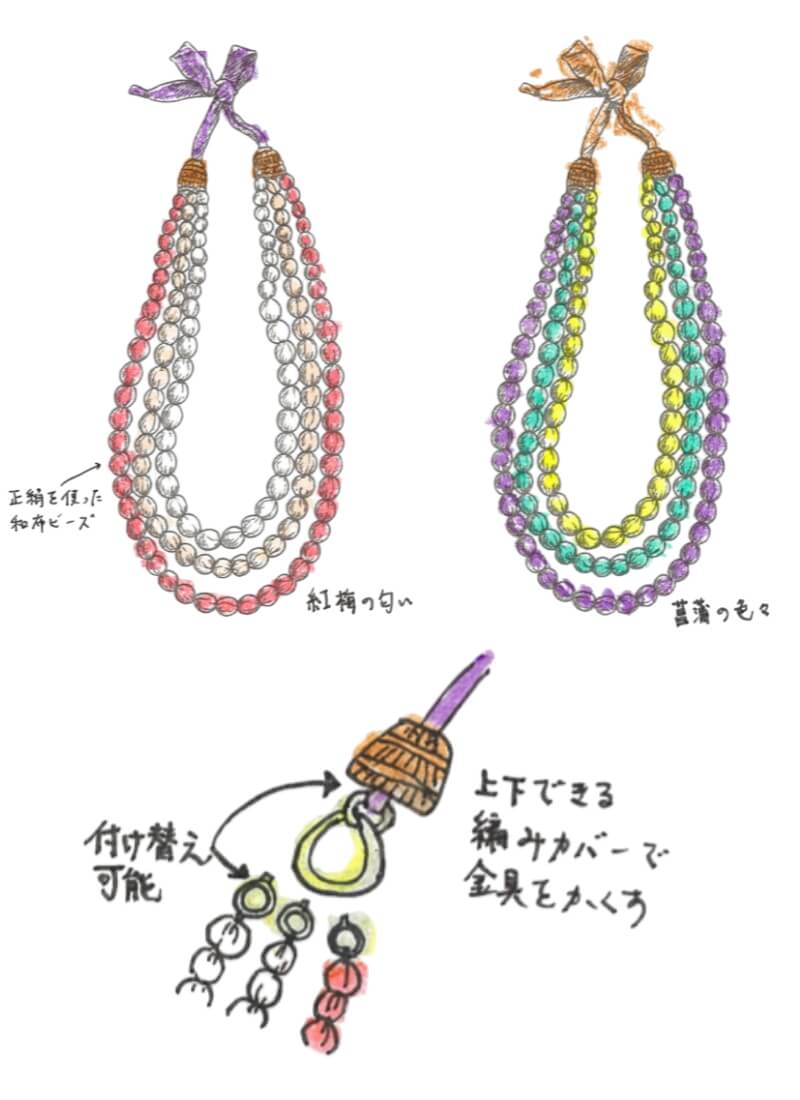
Tokyo Metropolitan Chuo/Joto Vocational Skills Development Center, Senior Division
山崎 幸恵
Work Title:Customizable Necklace KASANE
Concept
An accessory that brings the layered color palettes of the traditional junihitoe court kimonos, cherished for their seasonal sensibilities, into the modern day. The necklace allows for various combinations by interchanging the parts.
Features
- Expresses the elegance of formal court attire using Japanese fabric beads made from pure silk used in kimono.
- The interchangeable parts offer the possibility to enjoy various color combinations.

